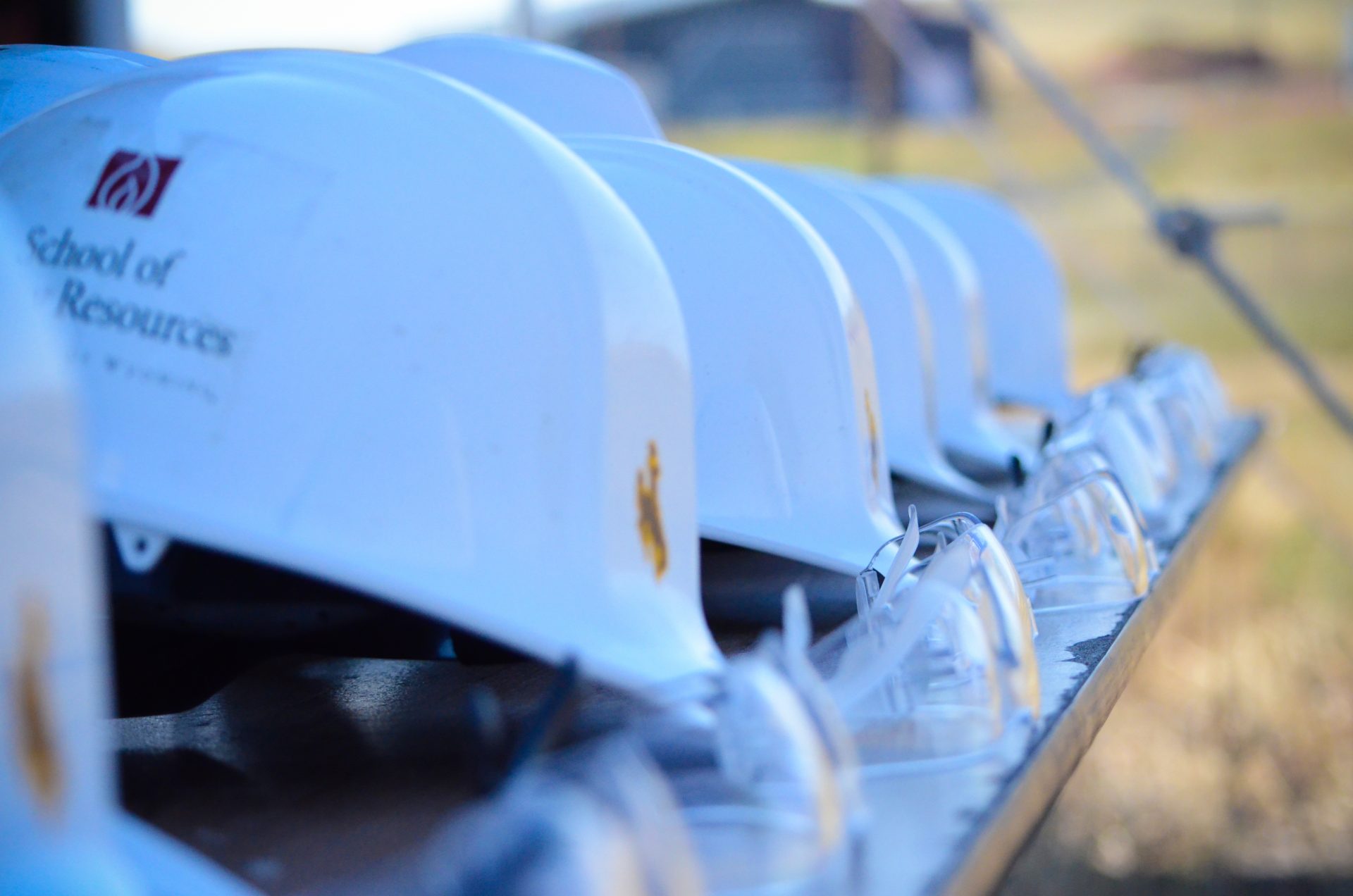UW, Atlas Carbon Break Ground On Coal Refinery Project

In the not-too-distant future, Powder River Basin coal could be used to not just to burn, but to build.
That’s the hope with a demonstration project that will be going up in Campbell County. It will test the commercial feasibility of technologies that turn coal into things such as bricks and asphalt.
Local and state officials and representatives from the University of Wyoming gathered at the Fort Union Industrial Park north of Gillette Friday morning for the groundbreaking of a coal refinery demonstration project.
The project, located next to Atlas Carbon, will allow researchers to scale up technologies that have been proven in the lab and on the pilot plant level, with the ultimate goal of commercialization.
Randall Luthi, the chief energy adviser to Gov. Mark Gordon, called Friday “a momentous day” in Wyoming history, because it represents a large step forward in finding new uses for coal.
That’s what the UW School of Energy Resources, which includes the Center for Carbon Capture and Conversion, has been working on for the past six years.
“It all started with a vision,” said Holly Krutka, executive director of the UW School of Energy Resources.
Richard Horner, now the senior advisor for the Center for Carbon Capture and Conversion, had the vision to find ways to support Wyoming’s coal sector that didn’t include burning it for fuel.
The project is a partnership between Atlas Carbon and the University of Wyoming School of Energy Resources, Polaris Asset Corporation and Wood PLC.
Atlas Carbon has been creating carbon-activated products in Campbell County since 2014.
Wood PLC is a consulting and engineering company, and Polaris is a private U.S. firm that helps bring new and emerging technologies to market by providing strategic management.
Luthi recalled a conversation with Sen. Jeff Wasserburger, R-Gillette, several years ago, where they talked about the golden goose that is Powder River Basin coal.
“There are a lot of hands around that golden goose’s neck,” Luthi said, adding that a lot of work needs to be done if that goose is going to keep laying “black gold.”
“Coal companies need to realize we’ve got to look broader than just mining coal,” he said.
While coal is doing relatively well right now, he said this will only last for a couple more years, and Wyoming needs to look further ahead.
“It’s not too late, but it is time that we lengthen our stride, and make more efforts to make this work,” he said.
Holly Krutka, executive director of the UW School of Energy Resources, said these partnerships are crucial to the success of the project.
“At the end of the day what’s really going to move this forward is the partnerships that we’ve built,” she said.
Reza Hashampour, CEO and chair of Polaris, said 90% of companies fail because they don’t know how to make the transition from research and development to commercialization. He said the future is bright for Wyoming, especially with the “can-do attitude” of its people.
He added that these partnerships are “a recipe for success.”
While Wyoming supports renewable energy, it’s coal has a big role to play worldwide, Luthi said. While it may be falling out of favor in certain parts of the U.S., countries such as Indonesia and China will still be in the market for it.
“I don’t think any of those areas are going to cut down the amount of coal they use,” he said.
Hashampour said Polaris has four clients who are in green technology, and it’s still “30 to 40 years away.”
What are they going to do?
Trina Pfeiffer, director of the Center for Carbon Capture and Conversion, will oversee the demonstration project.
These technologies have been tested at the lab level for three and half years, and they’ve spent the last year and a half running at a pilot plant.
“It’s very exciting,” said Pfeiffer, who has watched these technologies progress from the lab to the pilot plant to now a demonstration plant.
In a lab, coal is used in quantities of grams or milligrams. In a pilot project, that’s increased to 10 kilograms per hour.
This demonstration plant, when up and running, will use two tons of coal per day. If it proves successful, the next step is commercialization, which Pfeiffer foresees using “two unit trains (of coal) a day.”
The thermochemical process technology developed in SER’s CCCC efficiently decomposes Wyoming coal, turning it into liquid and solid materials that can be used to make products such as construction materials.
Pfeiffer said the pyrolysis unit will be built first. If all goes well, it will be in operation by the end of 2023.
Pyrolysis is the heating of an organic material in the absence of oxygen. At the demonstration plant, coal will be processed and turned into char. This char can be used to make things such as bricks, foam and soil amendments.
Once the pyrolysis unit is complete, and as long as the state legislature sees fit to continue to fund the project, construction can begin on the second process, which is solvent extraction.
This will take coal and turn it into residue and liquids. The extract can be used to make roofing materials, Pfeiffer said, as well as asphalt additives and asphalt rejuvenators, which can help strengthen and preserve road surfaces. These are just two examples of the many technologies that are being developed at UW to diversify the way that coal is used. “We’ll always be looking for new ways to use coal,” Krutka said. “We have so much exciting work going on at the university, I think the sky is the limit.”
Read the full article at Gilette News Record!